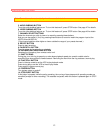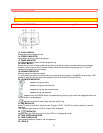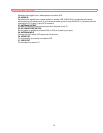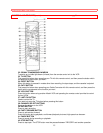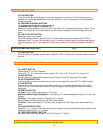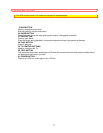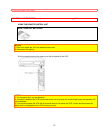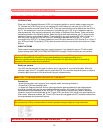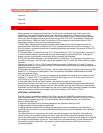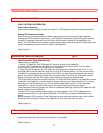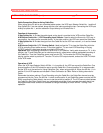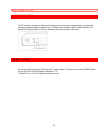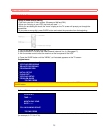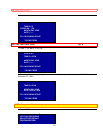
INSTALLATION CABLE SYSTEM
20
Figure A1
Figure A2
Figure A3
INSTALLATION CABLE SYSTEM
CABLE SYSTEM INFORMATION
Cable systems vary in features and services. The information and figures which follow cover most
installations. If you need information about other installations, please write to Service at the nearest
Hitachi address listed at the back of this manual. The tuning abilities of your VCR and the type of cable
service you have will determine what connections can be used. The VCR Tuning Range is listed in the
rear of this Manual. VCRs with Cable Tuning Ability (CTA) are able to tune channels listed for CATV.
Most cable services will be one of the following four types.
1. Basic Cable: Apartment buildings and planned communities may provide this type of service. No
channel selection Cable Box is used with the TV. All channels are received using VHF channels 2 - 13.
With this system, no special connections or operating procedures are needed. Connect the VCR and TV
as shown in figure C1.
2. Extended Cable - A Cable Box is used for TV Channel Selection: The TV is usually set to channel 3 or
4, and all channel selection is performed using the cable company supplied Cable Box. In this type of
system, no extra cost channels are available, and no channels are scrambled.
A CTA VCR can select channels on this system without a Cable Box, if the channels on the cable are in
the VCR tuning range. The Cable Box may still be needed for the TV, unless the VCR is used as a cable
converter.
You can use figure C1, C2, or C3 for Extended Cable connection. Connections in C1 and C2 need no
additional accessories. The connection of figure C3 allows recording and watching different programs but
operation is more complicated.
3. Extended Cable With Extra Cost Channels - No Scrambled Channels On System-Cable Converter Box
Used For TV: In this type of cable system, extra cost channels are added or deleted before the cable
enters the customer home.
If a CTA VCR and a CTA TV are used, a Cable Box is not needed. Connections can be made as shown
in figure C1. If a non-CTA TV is used with a CTA VCR, either figure C2 or C3 can be used. If both non-
CTA VCR and TV are used, figure C2 must be used.
4. Extended Cable With Extra Cost Channels - Scrambled Channels on System-Cable
Descrambler/Converter Box Used For TV: In this type of system the cable company supplied Box must
always be used to get proper reception of Extra Cost channels. All Extra Cost channels on the cable are
scrambled, but the Cable Box unscrambles any that you pay extra to view. Channels included in the basic
cable service fee are usually not scrambled, and can be tuned by a CTA VCR or CTA TV.
ADDITIONAL INFORMATION
When any type of scrambling is used for Extra Cost channels, the Cable Box must be used to view or
record those channels. A CTA VCR does not include unscrambling ability. that ability is restricted to only
cable company supplied equipment. On cable systems with scrambled channels, you have several
choices. Among them are:
a. Recording and watching only channels selected by the Cable Box (see figure C2).
b. Adding a second cable company supplied Box.
c. Adding switches to allow either recording and watching the channel selected by the Cable Box or
recording a channel which is non-scrambled while watching another channel selected by the Cable Box
(see figure C3).
Two Cable Systems: In some areas, two cables are used as inputs to the Cable Box. One cable may
contain mostly non-scrambled channels, the other mostly Extra Cost scrambled channels. When you
have a two-cable system, the cable with non-scrambled channels you wish to record (Cable A or Cable B)
can usually be connected as in figure C3. One Cable can be connected directly, or both cables can be
accessed by using the Cable Box. If you need to use both cables directly, write Hitachi service for a
connection diagram.



